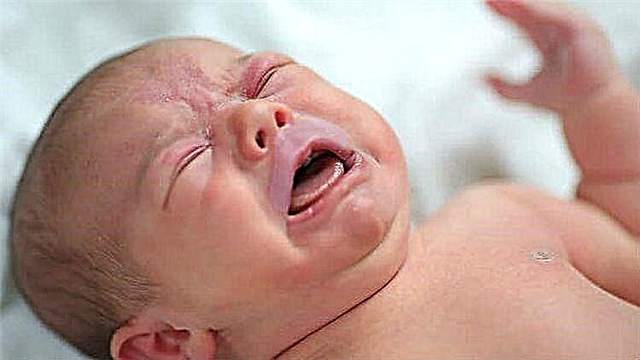
Treatment of diseases of the central nervous system is a rather difficult task. The methods used in children's practice should not only be safe, but also not cause painful sensations in babies. One of them is micropolarization of the brain.
What it is?
The brain is a real computer that organizes and plans the work of all organs. The functioning of this organ is quite complex. This is due to the variety of different functions that it performs. Influencing the work of the brain should be as gentle as possible. This can be achieved by using micropolarization.
This method has proven its worth in pediatric neurology. The therapeutic effect of various pathologies of the brain is carried out using direct electric current. It is quite small and does not exceed 1 mA in intensity. This effect is quite comparable to the natural tension in the cells of the brain (neurons). This makes it possible to safely use this method in the smallest patients.


Transcranial micropolarization is a unique method of treating the brain in babies.
Several scientists in different countries of the world worked on the creation of this technique. It took over a hundred years to develop this method. Our country can rightfully be proud that the first procedure for micropolarization of the brain was carried out at the Psychoneurological Institute. Bekhterev.
It should be noted that the method has not found sufficient widespread use. This is due to several reasons: the occurrence in some cases of technical errors during the procedure, obtaining a wide range of obtained values, as well as the lack of clear and recognized standardization of the results. According to statistics, micropolarization of the brain is performed more often in children than in adults. There are certain indications and contraindications for such treatment.


How is it done?
Micropolarization of the brain does not cause any painful sensations in the child. This largely explains that the method is quite applicable in children's practice. Even the smallest child tolerates such procedures well. Usually, overly emotional babies are tried to calm down a little before the study. The presence of the mother next to the child during the procedure helps to somewhat reduce the child's increased anxiety and excessive emotionality.
The course of treatment is compiled individually and depends on the initial underlying disease, as well as the age of the baby. Micropolarization can be carried out for both prophylactic and therapeutic purposes. The course usually lasts 10-12 sessions. The duration of one procedure is, as a rule, from ½ to an hour. In some cases, experts recommend repeating the course of treatment after 6-8 months.


The main goal of therapy is to activate the neurons of the brain and optimize the functioning of the central nervous system.
The action of a current of a certain frequency leads to the fact that the brain cells begin to work harder and more productively. There is also an improvement in interneuronal communication. This leads to the fact that the overall work of the brain improves.
A course of treatment is usually prescribed neuropathologist, speech therapist or child psychotherapist. Before the appointment of micropolarization of the brain, all the necessary analyzes and studies are usually carried out, establishing a complete and accurate diagnosis or pathological condition. Usually, electroencephalography of the brain or EEG is mandatory. This method allows you to identify the presence of a pathological process in the nervous tissue. Also, EEG is performed during the course of micropolarization: in the middle and at the end of the treatment.

Before carrying out the procedure, you should definitely talk to your child. It is necessary to explain to the baby that he will need to sit quietly for a certain time, without making active movements. In a conversation, you should definitely focus on the fact that he will not have any pain or discomfort.
Emphasize that you will be there for the entire procedure and nothing bad will happen.
Some whimsical people flatly refuse such treatment. In this case, try to turn the treatment into a game. Tell them that during these procedures the baby will become a real superhero! This usually works well with boys. Try to shift the child's attention from treatment to active play.

For treatment, a special helmet is put on the baby's head or electrodes are attached. It is through them that a constant current of low frequency will flow. All electrodes located inside the helmet are located in a strictly defined order. Before the micropolarization procedure, the doctor sets the individual settings for the device for a particular child.
During treatment, you do not need to sit absolutely still. The kid can move his body or arms a little. However, all active movements are prohibited. Their implementation significantly reduces the achievement of a positive result, and depress the degree of impact. The effect of this treatment method is cumulative. Usually, the first positive changes in the child's condition begin in the middle of the course of therapy.
Doctors note that conducting an electroencephalography of the brain in the middle of the course of treatment is very important. It helps to track the earliest signs of restoration of lost functions and notice the result.


Most patients feel better after treatment. In the absence of a positive result, a revision of therapy tactics and additional diagnostic methods are required. It is possible that "hidden" diseases or pathological conditions lead to a decrease in the result.
Who is the procedure indicated for?
There are strict guidelines for the appointment of the procedure. Micropolarization is, unfortunately, not a panacea for the treatment of all pathologies of the brain. It only helps in certain pathological conditions.
Usually, the decision on the need to prescribe such treatment is made by the attending physician. Assessing the initial state of the child, he determines the possibility of using this type of therapy in him.

Usually transcranial micropolarization is prescribed for:
- Lagging behind age-related development. If the baby has signs of a pronounced violation of mental or physical development, then he is referred for appropriate treatment. The therapeutic course in this case may be different and depends on the initial state of the child;
- Congenital pathology of the central nervous system - cerebral palsy. It is prescribed for various forms of this disease: hyperkinetic, spastic, cerebellar or mixed;
- Various voice disorders. Impaired work of the vocal apparatus due to pathological conditions of the central nervous system is also an indication for this procedure;
- Signs of an epileptic condition. The method is effective for various types of epilepsy, especially those occurring with an erased course or slightly expressed;


- Hyperactivity of various origins;
- Attention deficit disorder;
- Pronounced consequences of psychoemotional or nervous shocks, which caused significant disturbances in the functioning of the central nervous system in the baby;
- Syndrome of excessive aggression in childhood or adolescence. Micropolarization of the brain is most effective if mental disorders in a child are caused due to functional disorders;
- Various violations of urine excretion (enuresis) or feces (encopresis);
- Severe panic attacks and impaired social integration;
- Visual and hearing impairments. Reviews of many parents indicate that micropolarization is effective for the treatment of nystagmus of various origins, strabismus, amblyopia, sensorineural hearing loss;
- The consequences of traumatic brain injury. Often these pathologies are accompanied by the development of dizziness, headache, the appearance of autonomic disorders and even circulatory disorders;
- Tension headache;
- Oligophrenia (dementia), which is mild.


Contraindications
In some clinical cases, it is impossible to carry out micropolarization of the brain. She, like any other method of therapy, has individual contraindications. Usually they are established by a doctor at the stage of diagnosis - before the course of treatment is carried out and prescribed. If the baby has certain contraindications, then micropolarization should be abandoned.
The main restrictions for the procedure include:
- Simultaneous with micropolarization, acupuncture, magnetic resonance imaging (MRI), as well as other electrical methods of treatment.
- The use of psychotropic drugs.
- Severe burns or traumatic injuries on the head at the places for applying the electrodes.
- The acute period of inflammatory infectious diseases of the brain: meningitis, arachnoiditis, encephalitis and others. In this case, this contraindication is relative. After eliminating the cause and adverse symptoms of a viral or bacterial infection, it can be carried out.
- Congenital pronounced pathologies of the cardiovascular system, accompanied by the appearance of cardiac arrhythmias. Persistent arrhythmias are a contraindication for exposure to electric shock, as this can aggravate their course.


- The presence of metallic elements inside the body. Babies who have pins in the bones after various injuries cannot be micropolarized. Removable metal structures (braces, dental braces and others) are not a contraindication to the procedure, as they can be easily removed before it.
- Pathological narrowing (stenosis) of the blood vessels that feed the brain. Active exposure to electric current can lead to their excessive expansion, which contributes to the occurrence of pathological rupture and intracerebral bleeding.
- Neoplasms in the brain and various tumors. Exposure to electric current in this case can contribute to their more intensive growth or spread of metastases.
For information on the conditions under which children show micropolarization of the brain, see the next video.



